Colliding Particles meet Gravitational Waves
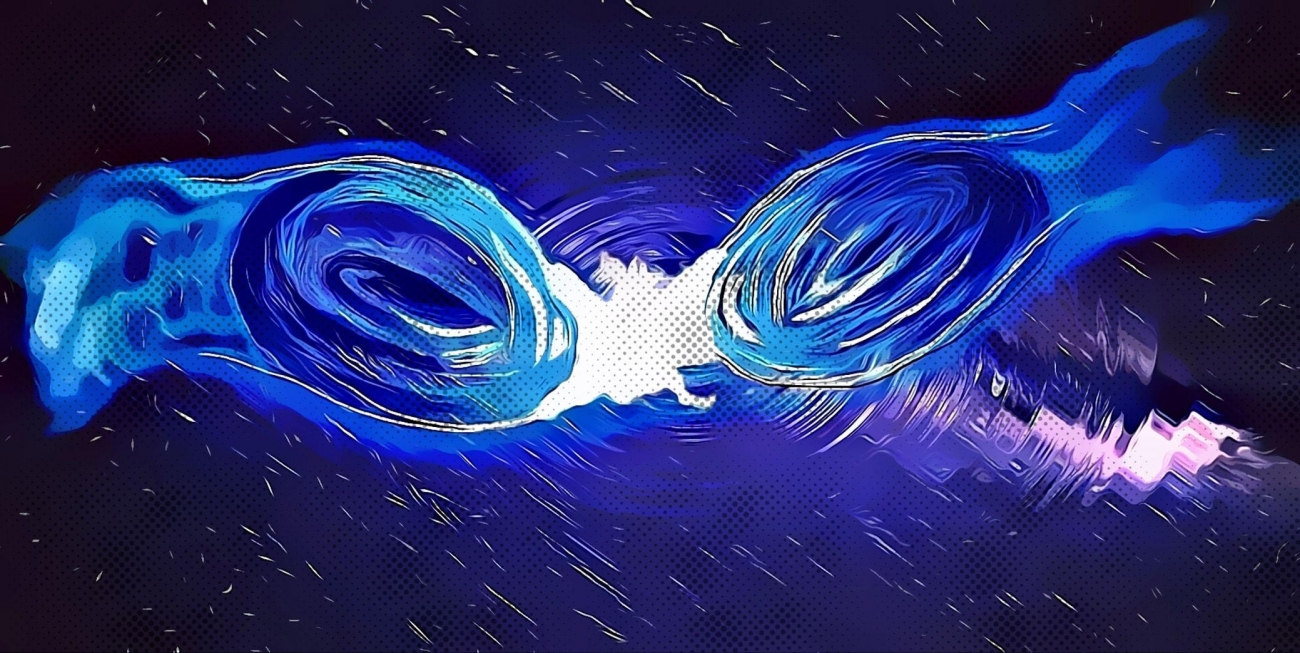
Gravitational waves contain crucial information on the structure and on the history of the Universe. They can give us access to unique insights on particle physics at very high energies and astrophysics in extreme regimes. The detection of gravitational waves and the measurement of their properties is arguably one of the most technologically and conceptually challenging feats that we face today as physicists.
The Laser Interferometer Gravitational-Wave Observatory (LIGO) operated in the US was the first to officially detect gravitational waves on September 14, 2015. This discovery led to the award of the 2017 Nobel Prize in Physics to Kip Thorne, his fellow LIGO founder Rainer Weiss, and Barry Barish, one of the project’s principal investigators. This was a tremendous success, the culmination of decades of research and the accomplishment of a task that was not always seen as feasible by the community.
In spite of this triumph there is still plenty of information encoded in gravitational waves that we have not yet access to. This is due to a number of technical reasons, including irreducible backgrounds on Earth, but can ultimately be explained by the extremely small size of the effects that we expect. If you were asked to measure the length of a table with an error much inferior to the size of a nucleon, you would probably consider it unfeasible. These are the kind of technical challenges that we have to overcome when studying gravitational waves. For this reason a wide range of frequencies that are theoretically interesting remain unexplored, as shown schematically in Fig. 1.
In this context any new idea for the detection of these phenomena is a welcome addition to the field and must be considered seriously. A recent workshop, Storage Rings & Gravitational Waves (SRGW2021), organized by the ARIES project, brings together scientists from the fields of GW, high energy and accelerator physics to contemplate possible ways in which particle storage rings (such as the Large Hadron Collider) can be used to detect these newly-discovered messengers of our Universe.
The opening of the workshop by Jorge Cervantes (ININ Mexico) gave us a vivid account of the history of gravitational waves, showing how subtle they are theoretically. In a 1916 letter to Karl Schwarzchild, Albert Einstein argued against their existence: “Also, there are no gravitational waves. This probably is also related to the one-sidedness of the sign of the scalar T, [nonexistence of a gravitational dipole]”.
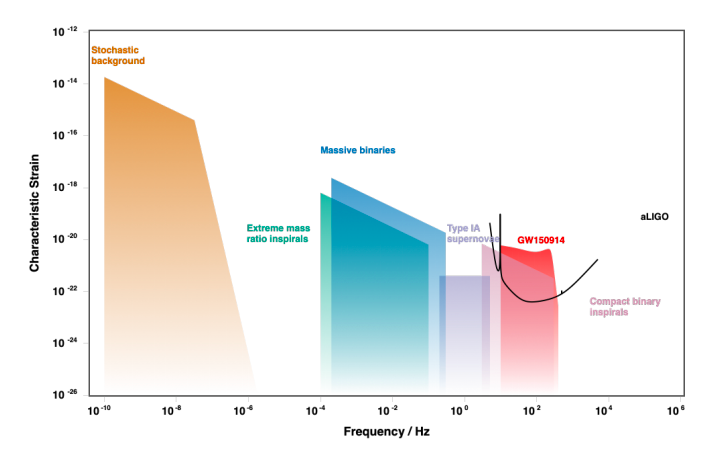
Figure 1: Schematic representation of some expected gravitational wave sources (shaded areas) and the design sensitivity of Advanced LIGO (black line). Source: http://gwplotter.com. analogous to light waves.
Subsequently he discovered a wave equation with three solutions, but in 1922 Arthur Eddington showed that two of them can travel at a speed that depends on the coordinate system, so they were spurious. He could not rule out the remaining solution. However in 1936 Einstein and Rosen again concluded that gravitational waves do not exist. The Phys. Rev. reviewer of the manuscript famously pointed out their mistake. Einstein was far from being convinced and drafted a rather piqued response to the journal editor. He later came to agree with the referee conclusion after a conversation with Leopold Infeld.
The Second World War and the Cold War separated Einstein from his collaborators. Only many years later the existence of gravitational waves and their effects on matter were finally established through the work of Felix Pirani in 1956 and the thought experiment proposed by Richard Feynman at Chapel Hill in 1957. After the conference at Chapel Hill, Joseph Weber started to build the first gravitational wave antennas. An example is shown in Fig. 2.
Today we came a long way from these original resonant apparatuses, as we discussed during the contribution by Raffaele Flaminio (CNRS/LAPP, Annecy and NAOJ, Tokyo) on the LIGO and VIRGO detectors. The effects that LIGO first measured represented the final moments of two black holes 1.3 billion light years away swirling together and merging into a single object with a mass 62 times that of our Sun.
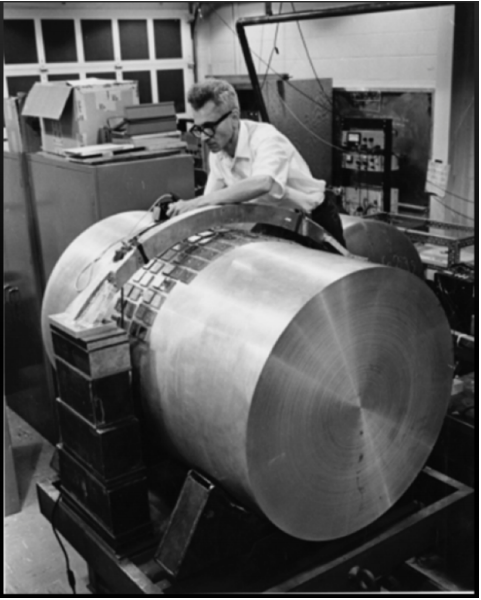
Figure 2: An example of the first gravitational wave detectors: the Weber’s bar. Photo from the talk of Jorge Cervantes at the SRGW2021 workshop.
LIGO (in Fig. 3) accomplished this feat by isolating mirrors from external forces so that they are approximately freely falling. The distance between these mirrors is determined by the measurement of a phase difference between powerful lasers reflected multiple times in Fabry Perot cavities. LIGO can detect changes in proper distances as small as one ten thousandth the diameter of a proton. The measurement is so precise that the uncertainty principle is an important source of noise and squeezed quantum states of light are being studied for a detector upgrade.
Since the first detection by LIGO many more signals have been recorded and analysed. Astronomers observed 39 cosmic events that released gravitational waves over a 6-month period in 2019 — a rate of more than one per week. The growing data set is helping astronomers to map how frequently such events have happened in the Universe’s history.
This is the beginning of a whole new field. We are entering the era of GW astronomy, a young and dynamic domain of research with much still to discover. The talk by Bangalore S. Sathyaprakash (Penn State, USA and Cardiff U., UK) outlined the main sources of gravitational waves that we expect theoretically. They include waves emitted by binaries of compact objects, such as black holes and neutron stars, waves produced by gravitational collapse, supernovae and other transient phenomena, waves originating from non-axisymmetric spinning compact objects (neutron stars and white dwarfs) and finally stochastic backgrounds that can have both astrophysical and cosmological origins.
As a particle physicist, my attention is immediately attracted by cosmological stochastic backgrounds. Gravitational waves are extremely feebly interacting, so the Universe becomes transparent to them early in its history. Detecting cosmological backgrounds of gravitational waves would provide us with a picture of the Universe at early times and give us hints about high energy phenomena, such as high temperature phase transitions, the nature of inflation and new heavy particles that we can not directly produce in the laboratory.
The picture that gravitational waves can provide is similar to the one that we already have from the Cosmic Microwave Background (CMB), but possibly coming from much earlier times. The relic radiation from photons decoupling from the thermal bath (the CMB) provides us with a snapshot of the Universe more than ten billion years ago, about one hundred thousand years after the Big Bang. Gravitational waves can take us much further back, possibly all the way to the moment where the effects of quantum gravity became important.
After this long introduction it is even more clear why we would like to learn as much as possible about gravitational waves. Most of the talks at the workshop are devoted to exploring their effects on particle storage rings with the hope of using them as GW antennas. The interested reader is referred to the workshop website for a full list of contributions and their material (https://indico.cern.ch/event/982987/contributions/).
From our classical physics intuition it is tricky to fully understand the effect of GW on a physical system due to the large coordinate freedom in General Relativity. In principle we can choose a reference frame where the coordinates move together with the wave without altering the physics. The observers in this frame experience phenomena that are almost completely inverted compared to their classical intuition. For example freely falling objects do not move when the wave reaches them, while rigid bodies might
Luckily, for gravitational waves with long wavelengths compared to the detector size one can choose a coordinate system where Newtonian intuition applies. In this frame the waves act as a Newtonian force and coordinate distances are the same as proper distances for non-relativistic objects. Therefore rigid bodies such as the ground, the Large Hadron Collider magnets and ring do not strongly respond to low frequency waves and we can focus on more loosely bound objects such as the particles travelling in the storage ring.
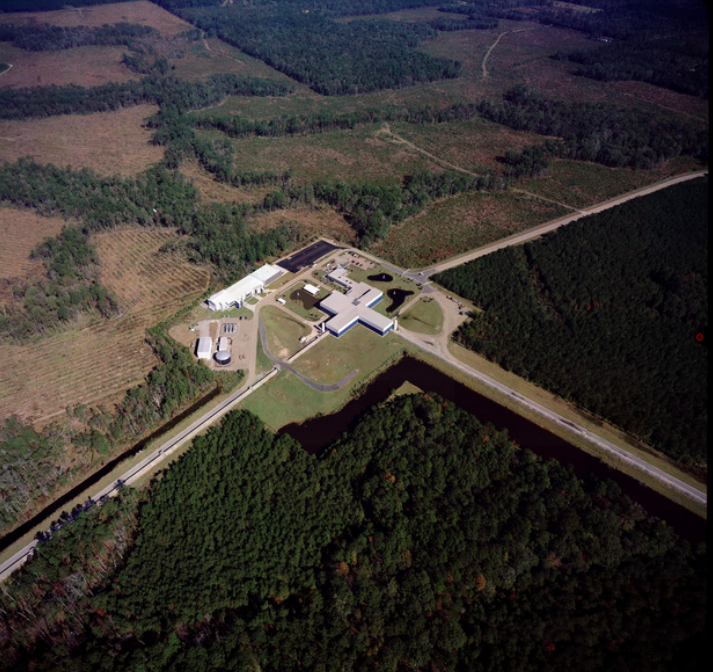
Figure 3: Aerial view of the LIGO Observatory at Livingston. Credit: The LIGO Collaboration (https://www.ligo.caltech.edu).
One interesting effect that was highlighted during the workshop is the change in the revolution period of particles induced by the waves. At the LHC this effect is balanced by a restoring force provided by the radio frequency cavity that accelerates the protons. Proton bunches arriving later than they should are accelerated more and vice versa. More generally any system in equilibrium (such as particles on a stable orbit in a storage ring) responds as a harmonic oscillator to the small perturbations induced by the GW.
At the LHC this effectively provides a 10 Hz restoring force that could resonate with a gravitational wave of the same frequency. In this regime the simplifications outlined in the previous paragraphs apply since the associated wavelength is more than a million kilometers.
On resonance the LHC could be sensitive to length deformations as small as a part in ten to the eleven. This is extremely impressive, but still a long way from realistic GW sources. It was suggested in the talk by Suvrat Rao (Hamburg U. & S.) that an idealized ring without a radio frequency cavity can bridge this gap, reaching extremely interesting sensitivity, provided that it can be operated in stable conditions for hours.
Radio frequency cavities can be themselves interesting GW detectors. A heterodyne detection technique, based on energy transfer between electromagnetic modes of a resonant cavity has been revisited at the workshop by Sebastian Ellis (IPhT CEA Saclay). This concept was first proposed in the 80s by Francesco Pegoraro, Emilio Picasso and Luigi Radicati and led to the development of a first prototype shown in Fig. 4. Today the vast improvements achievable in quality factors, cooling and isolation and a more thorough characterization of backgrounds can prove important for gravitational wave detection.
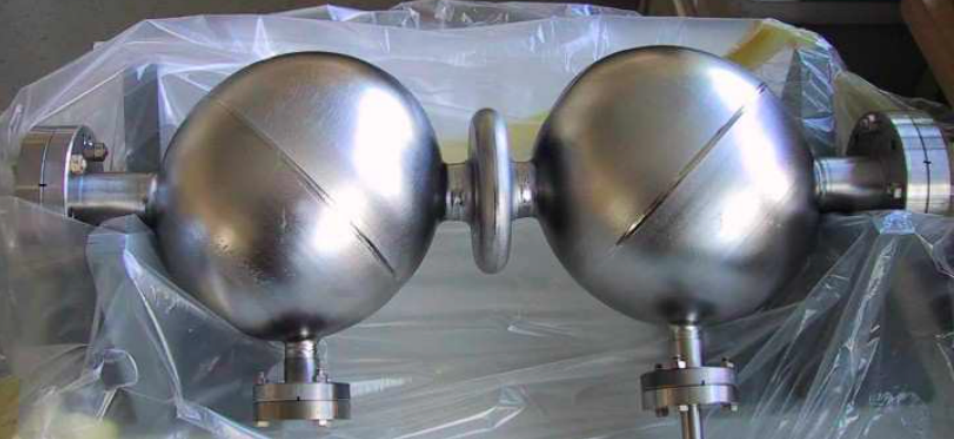
Figure 4: A prototype radio frequency cavity for the detection of gravitational waves from the MAGO collaboration. Figure taken from arXiv:0502054
A number of other effects, including for instance the transverse motion of particle bunches, enhanced by betatron oscillations were discussed at the workshop (Katsunobo Oide, KEK and CERN), where we also had a wonderful overview by Jorg Wenninger (CERN) of LHC sensitivity to ground vibrations and other tiny effects that could mimic gravitational waves. At the time of writing this article the last two days of the workshop are not yet concluded and we are still waiting for other interesting updates on atom interferometry (John Ellis, CERN and King’s College and Oliver Buchmuller, Imperial College) and GW production at storage rings (Pisin Chen, National Taiwan U. and John Jowett, CERN).
The main message that emerged from this scientific meeting is that there are several potential options that in the future can lead to a gravitational wave antenna based on accelerator technologies. If you enjoy brave new ideas that project us far into the future of the field I recommend that you take a look at the workshop website (https://indico.cern.ch/event/982987/) and stay tuned for future events.
